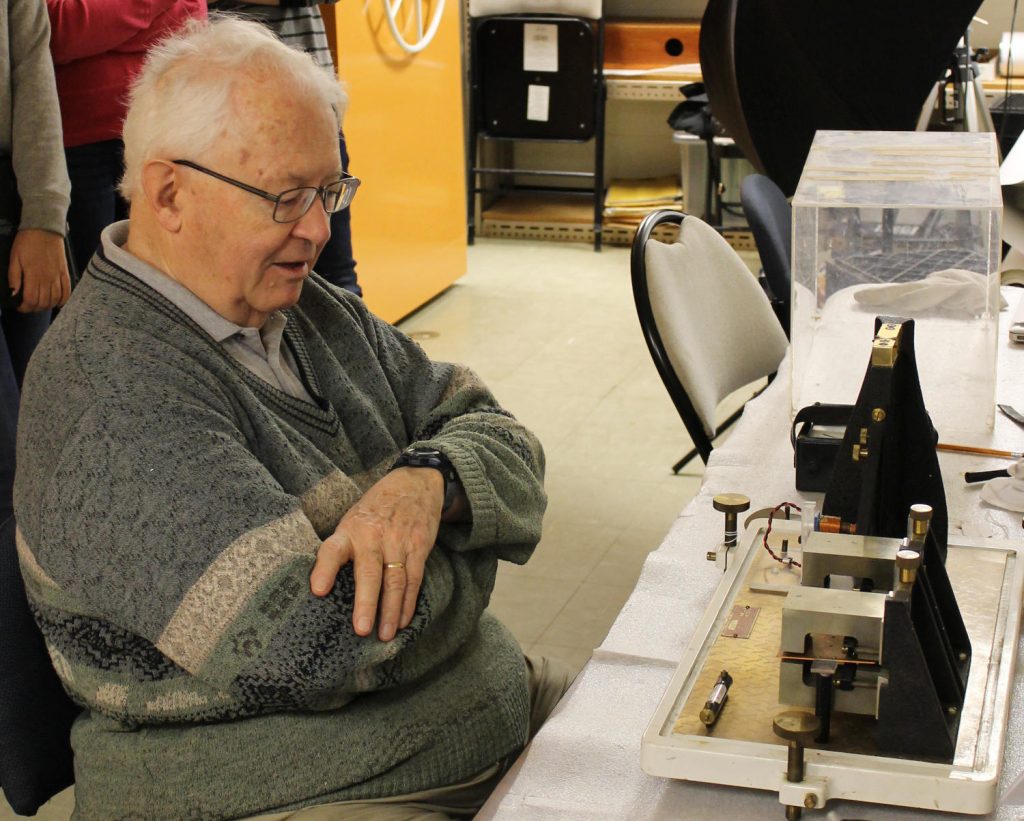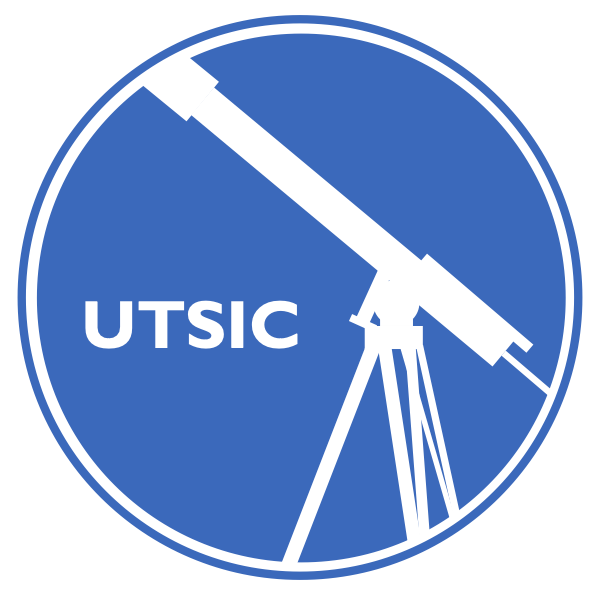This collection represents the legacy of an important subdiscipline within the Department of Physics at the University of Toronto. The geophysics group within that department has had played an important local and international role in developing methods and technologies for surveying the landscape—particularly the “geological shield” comprised of Precambrian igneous and metamorphic rock. This environment favours surveying technologies based on measuring magnetic variation, whereas seismic techniques tend to perform better in alluvial basins.
As an area of research, geophysics may be divided into two broad categories: “scientific geophysics”, which focuses on areas such as geochemistry and geochronology that contribute to an overall understanding of terrestrial systems, and “applied geophysics”, which focuses on developing techniques that apply that understanding to endeavours such as mineral prospecting, geoengineering, archaeology, and others.
While both approaches flourished at the Department of Physics, this collection focuses on the applied aspect of local research in geophysics. Other collections, such as a collection of artifacts gathered from the Potassium-Argon (K-Ar) radioisotope dating laboratory of Professor Derek York (1936-2007), will better represent the “scientific” side, once the cataloguing of this material is complete.
Important themes reflected in the current geophysics collection include:
- Hard Rock Mining in Canada: The development of this area of applied geophysics at the University of Toronto owes much to the economic importance of mining and mineral exploration in Canada, and specifically within the Canadian Shield. These interrelationships can be traced through several surplus instruments donated by mining companies for teaching purposes, and through instruments whose development was supported by industry, or that were used for local mineral prospecting.
- The Local Scientific Instrument Industry: The geophysics group can be seen as a central node in a network of geophysical engineering companies that apply scientific techniques to mineral and petroleum exploration. Teaching and research at the University of Toronto have played an important role in spreading these techniques and establishing a number of local companies.
- The Evolution of Electronic Instrumentation: The material in the geophysics collection represents several generations of instrumentation used in applied geophysics. This technology has evolved alongside improvements in electronics that include the widespread adoption of multichannel systems, more powerful methods of data recording, improved battery technology portability, the computer processing of instrumental data, and many others.
- Networks and Relationships beyond Canadian Geophysics: The artifacts within this collection reveal the relationship between applied geophysics and other areas of scientific research and industry. Some of these are listed below under the heading “Networks of Research and Teaching”.

describes a swinging-gate seismometer first used
at the Geological Survey of Canada.
History
Geophysical research at the University of Toronto can be traced to the influence of the eminent Canadian geophysicist John Tuzo Wilson (1908-1993), who became a Professor of Geophysics at the University of Toronto in 1946. Wilson would later be celebrated for his contributions to the “plate tectonic” model of the earth that was founded on the evidence of magnetic striping caused by geomagnetic polarity reversals. Wilson was active in Canadian scientific institutions, including the Geological Survey of Canada. In 1964, he helped to found the Canadian Journal of Earth Sciences, which is seen as heralding “the beginning of an expansionary period for earth science research in Canada.” [West et al. 2014, xvii].
Geophysical research flourished at the University of Toronto under the influence of Wilson and early colleagues including Jack Jacobs, Don Russell, and Ron Farquhar. By the 1960s, a flourishing geophysics laboratory was combining engineering expertise in the burgeoning fields of electronics and computing, with the latest scientific understanding of geomagnetics to test and develop novel surveying techniques. The testimony of Dr. Gordon West, a former student of Wilson and an early member of this laboratory, has been invaluable in documenting this collection.
Over subsequent decades, the expansion of Canada’s hard rock mining industry drove demand for more and better methods of mineral prospecting. The geophysics laboratory provided a key resource for training applied geophysicists and for developing new instruments. This collection documents both the teaching aspect of this role, through several purpose build demonstration experiments used in the lab, as well as through several generations of professional equipment used in the field.
A detailed history of geophysics at U of T is given in (West 2014) cited below.
Types of Artifacts
The items within this collection refer either to teaching or applied research. They fall into several general categories that, in some instances, overlap:
- Teaching instruments: These instruments have been locally designed and built to convey scientific principles in an urban classroom setting where real surveying instruments would be unusable or impractical, or they are surveying instruments. In other cases these are small-scale analogues to surveying instruments that are suitable for use in student field camps.
- Surplus Field Instruments: These instruments have typically been gathered from better funded institutions such as mining companies or government surveying projects. They are used in classroom instruction or in student field camps.
- Research Instruments: These instruments were used by U of T faculty and students in academic research in fields such as geophysical prospecting and archaeological surveys.
- Experimental Instruments and Prototypes: We have two examples of locally made instruments that represent experimental work by faculty and graduate students. One of these, the Multichannel Earth Resistivity Measuring System, is a graduate research experiment. We have also acquired several prototype components of the UTEM system for geomagnetic prospecting, which is still being developed and produced in Ontario. We hope to acquire other examples of locally developed equipment.
Networks of Research and Teaching
This collection is especially useful for demonstrating the relationships between the geophysics and other important contexts and institutions. As such, it serves an important map of an important Canadian and international scientific field of research. Some of these connections, and the artifacts that related to them, are listed here:
- Government Surveying: The Canadian government has long been a key player in mounting surveys of the landscape. These had several, often overlapping purposes, such as promoting mining and petroleum, or facilitating navigation and the development of transportation and communications. Important institutions include the Geological Survey of Canada and the Dominion Observatory (now merged as part of Natural Resources Canada). The collection includes an altimeter that was likely used in early magnetic surveys by the Dominion Observatory.
- Geology and Earth Sciences: There is a close relationship between the disciplines of geophysics and geology/ earth sciences. At the University of Toronto, the former is a subdiscipline within the department of physics, while the second is takes place in the separate Department of Earth Science. A number of faculty and graduate students whose equipment is featured here were affiliated with both departments.
- Archaeology: At least two artifacts, the Multichannel Earth Resistivity Measuring System and one of two Proton Progression Magnetometers, were associated with surveys aimed at mapping buried archaeological features. This is one of a number of connections that one finds between the Department of Physics and archaeological science.
- Mining and Prospecting: As noted, research in applied geophysics was driven in large part by the economic opportunities provided by hard rock mining. Students in geophysics often went on to careers at mining companies, or companies dedicated to mineral prospecting and other geophysical services. A number of local companies were developed to sell specialized instrumentation and services.
Bibliography and Sources:
- Publications:
- West, Gordon F, Ron M. Farquha, George D. Garland, Henry C. Halls, Lawrence W. Morley, and R. Don Russel. (2014). “John Tuzo Wilson: a man who moved mountains.” Canadian Journal of Earth Sciences (2014): xvii-xxxi.
- West, Gordon F, Ron M. Farquha, George D. Garland, Henry C. Halls, Lawrence W. Morley, and R. Don Russel. (2014). “John Tuzo Wilson: a man who moved mountains.” Canadian Journal of Earth Sciences (2014): xvii-xxxi.
- Oral Histories:
- There is an excellent published interview with Gordon West that was conducted by Rob Stewart, Jean Legault, and Oliver Kuhn for the Recorder magazine of the Canadian Society of Exploration Geophysicists in the Winter of 2018. It discusses the history of geophysics at the University of Toronto as well as many aspects of the profession of geophysics generally. (Archived September 12, 2024)
- In documenting this material, the collection has recorded a number of interviews with Dr. Gordon West, who pursued the geophysics option of engineering physics in 1954– 1955, and later as a graduate student under John Tuzo Wilson’s geophysics division from 1956 to 1960. West went on to become a professor of geophysics, eventually leading the laboratory and designing its teaching experiments. West became professor emeritus in 1998.
